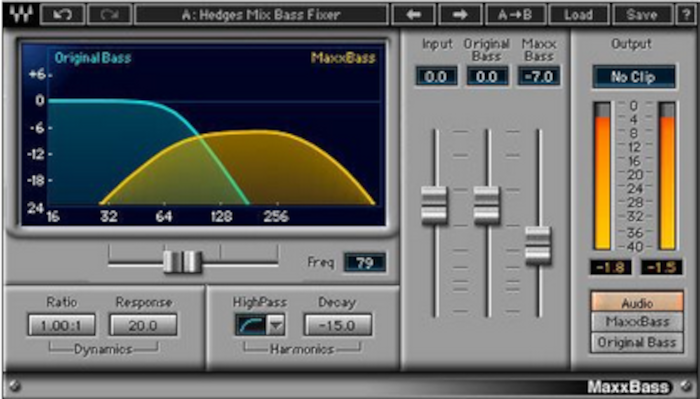If you’re looking to boost bass on tracks intended for the internet without overwhelming the mix, there are effective strategies using plugins that can help enhance the perception of bass frequencies without swamping the other elements in your audio. You might not want to drastically alter the source patch because the current sound suits your vision. Instead, focus on subtle processing techniques that preserve the original sound while making it more adaptable to various playback systems, especially those with limited bass response.
One method to achieve this is by boosting lower-mid frequencies. A well-designed EQ plugin can help you shape the sound in a way that gives the impression of deep bass, even on smaller or domestic loudspeakers that can’t fully reproduce the lowest frequencies. Rather than boosting the sub-bass range, which many home systems struggle to handle, try focusing on the 150-250Hz range. Boosting this range can provide a sense of bass presence without overwhelming the other elements in the mix.
Specialized plugins like Waves’ Maxx Bass are also very effective for this type of processing. This plugin generates harmonics in the lower-mid range to create the illusion of deep bass, which can be more easily reproduced on small speakers. As seen in the plugin’s GUI, the original bass is represented by the blue curve, while a secondary hump in the low-mid region (yellow curve) is added to enhance the perceived bass. This approach moves more energy into the frequencies that smaller speakers can handle, making it seem like there’s more bass than there actually is.
Paul White, Editor in Chief of Sound On Sound, emphasizes that most home audio systems, particularly those attached to computers, don’t reproduce deep bass effectively. The key to achieving good bass on these systems lies in focusing on the frequencies that they can reproduce, which is often in the 150-250Hz range. By using EQ or specialized plugins like Maxx Bass, you can boost this range, creating the illusion of deeper bass without adding unnecessary low-end that won’t be heard on smaller systems. Adding a low-shelving cut below 70Hz can also help remove excess low-end rumble that might otherwise muddy the mix.
Before you begin working with your plugins, it’s crucial to establish a reference point by listening to commercial mixes that you are familiar with. This will help you gauge how much bass boost is needed in your mix and ensure that your room isn’t artificially boosting certain frequencies, leading you to under-mix the bass. Many home studios suffer from acoustic issues that exaggerate bass frequencies, so it’s essential to compare your mix on various systems, including both large studio monitors and smaller speakers, to ensure the bass sounds balanced across all playback devices.
When preparing your mix for MP3 encoding, consider the specific challenges of encoding bass-heavy tracks. Plugins that compress and limit your mix may need to be adjusted when creating a version for MP3. Over-compression can lead to a muddled low end due to the way the encoding process shifts high-frequency content. Try to avoid over-compressing your mix, as this can result in a lack of clarity, especially in the low-end frequencies. Additionally, leaving a little headroom before encoding can help avoid any unwanted distortion or muddiness caused by the MP3 conversion process. Lowering your peak levels by one or two decibels, either by adjusting your mix-buss limiter or normalizing the final mix, gives the encoder more space to work with, improving the overall quality of the MP3 file.
In conclusion, using EQ plugins to focus on the lower-mid frequencies and plugins like Maxx Bass to enhance the perceived bass can help ensure that your tracks translate well across different playback systems. By employing these techniques, you can achieve a powerful bass presence that maintains the clarity and balance of your original sound, even on small speakers or compressed audio formats like MP3. This way, your music will still hit hard, whether it’s played through high-quality studio monitors or basic computer speakers.


0 Comments